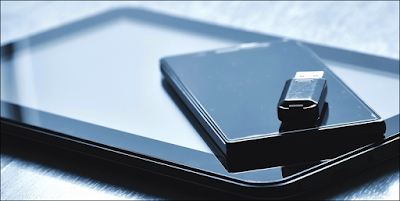How to access flash files from your Android phone

Among the features that Android phones excel over iPhones is the multiplicity of storage options, as the amount of data you are allowed to download is not limited to the storage capacity of the phone's internal memory.
When you ever have the problem of not having enough space to install your apps and games and store your photos, you can simply buy a microSD external storage card, and you'll still stick to your phone without having to buy a new phone just because it's not enough space for you.
But despite this, there may come times when you need to use another external storage memory in your phone, we are not talking here about the microSD but the flash drive. Maybe you want to transfer files from your phone directly to it without the need for a computer, or vice versa, or there are photos and movies that you want to browse on your phone from the flash drive.
Fortunately, this is possible, as most Android phones support the ability to connect external storage through a USB port, but it varies depending on the type of port your phone has — USB-C or Micro USB. But we're going to talk about all of them, so let's get started.
If your phone is supported by a USB-C port

If you buy a mid-range or upper-class phone, there is a high probability that it has a USB-C port in which case you have some simple options to connect the flash drive directly to the phone.
The first option is to buy a new USB-C To A flash drive like this available on the Amazon store from Kingston so that there is an access port in the USB-C port in your phone, and another USB port to connect the flash drive to the computer, and therefore it is very practical and worth buying.
But if you see that its cost is high, you can consider the second option, which is to buy a USB C to USB adapter, which is a popular product in electronic and local stores, and sometimes it is even included in the phone box (especially Samsung) The idea of the adapter is very simple, just plug your flash drive into the USB port and then connect the adapter to the USB-C port in your phone.
Read also: 5 features you should ask about when buying a new or used phone
If your phone is supported by a Micro-USB port

In case your phone comes with a micro-USB port, you can also buy a micro-USB flash drive such as the Sandisk Ultra USB 3.0 OTG, although these flashes are not common and limited, but if you can get them, do not hesitate. The reason for this is due to security and protection, as this flash drive will only be used on your phone or on public Android phones and not on computers and therefore the possibility of being infected with viruses and malware is small - even zero.
But also because of its cost, you can only get a USB To Micro-USB adapter, or as it is called "OTG", a cable through which you connect your flash drive and the last end into the Micro-USB port of your phone. The price of this adapter is very cheap and is available in all electronic and local stores due to the popularity of phones that carry a Micro-USB port.
How to access flash drive files from the phone

No matter what type of flash drive or type of port your phone uses. Once the flash drive is connected to the phone, you should receive a notification that the external memory (flash drive) is connected. You can click on this notification and then press the Open button which will take you directly to the default file management application where you can browse files stored on the drive, as well as transfer files to/from the phone's internal or external storage.
It may not work out that way sometimes; after connecting the flash drive to the phone, you may see a notification telling you to reconfigure the flash drive so that it reads correctly. You can do this through the phone, just click on the notification to go to the "Format as portable storage" screen where you can find the Erase & Format button which with one click on it will reconfigure the flash.
Keep in mind that this process will completely delete all the contents of the flash, so if the goal is to connect the flash drive to transfer files from it to the phone, you should not format the flash drive directly in this way. Instead, you'll need to transfer the data from the flash drive to your computer, format it over the phone, and then restore the files inside it again.
